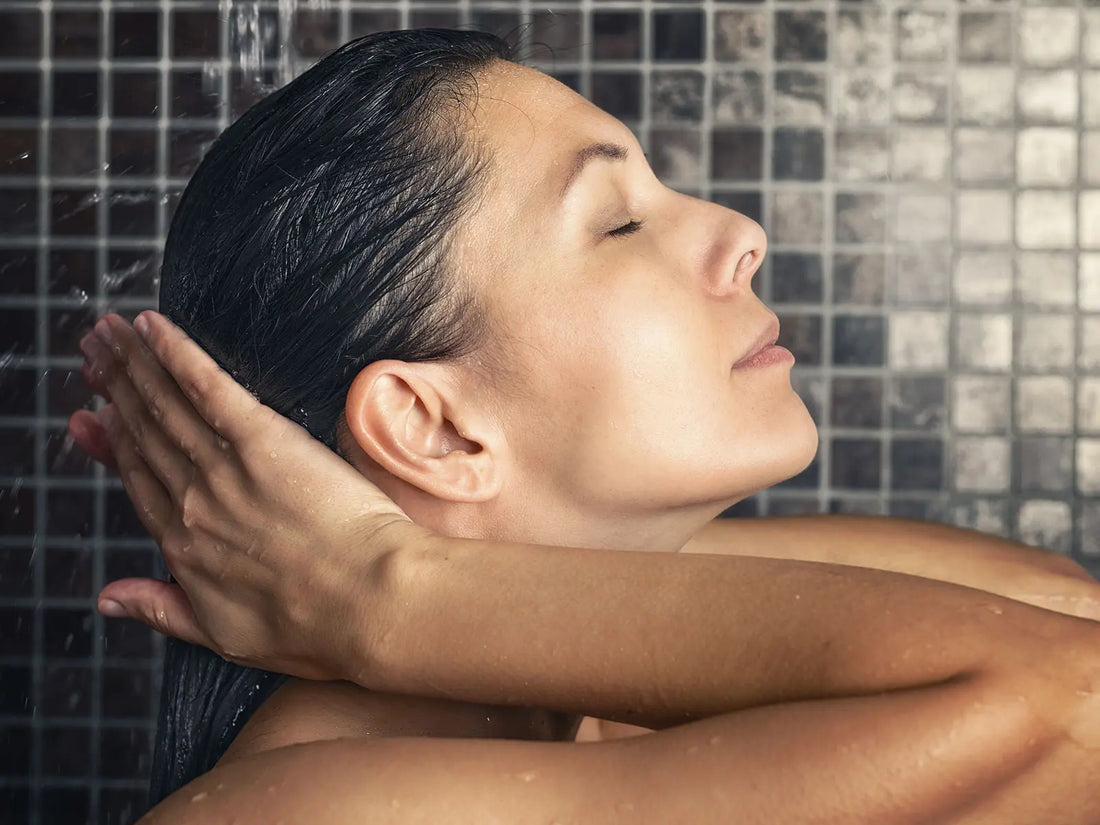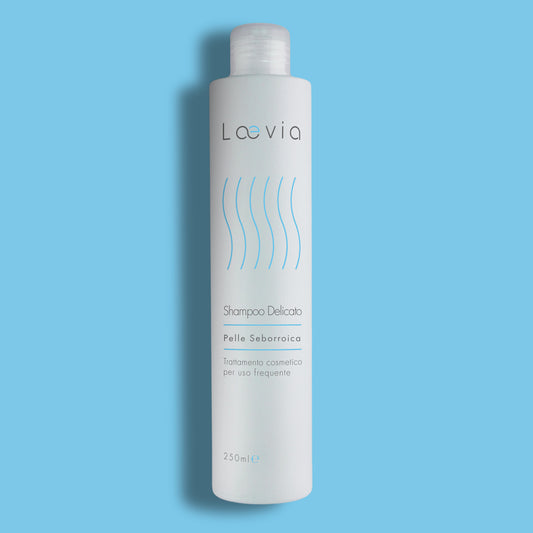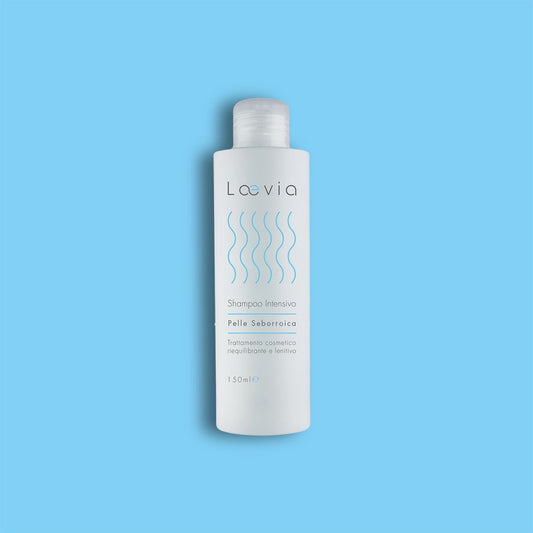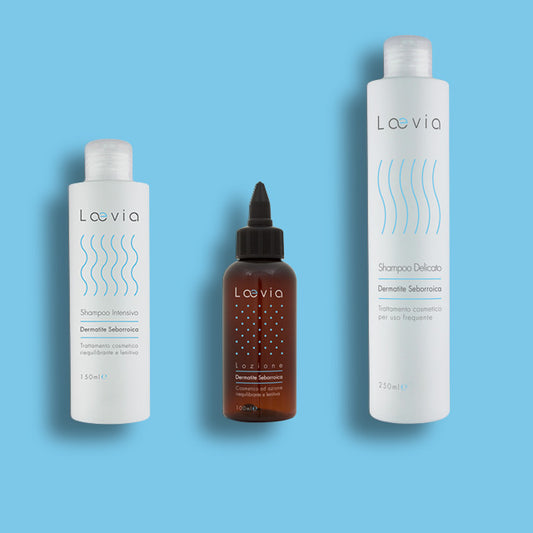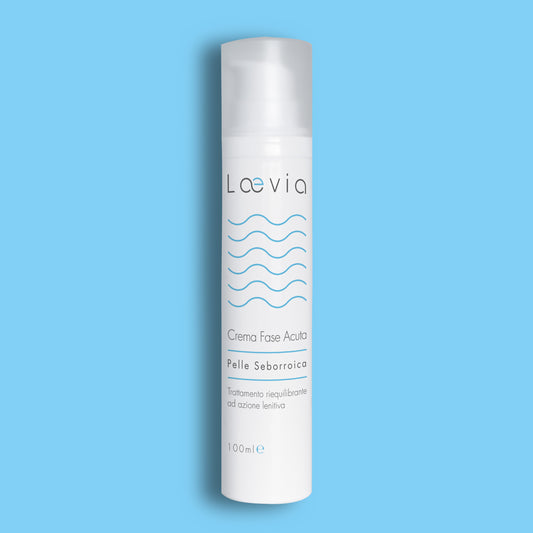Sometimes incorrect strategies are chosen to combat a problem. For example, in the presence of seborrheic dermatitis, one tries to cover the oily skin by letting the hair fall on the cheeks, or chooses to smother the hair with inappropriate hairstyles to hide the dandruff covering the scalp. Instead, it would be more appropriate to put on airs and walk with your head held high (because there is absolutely nothing to be ashamed of!), thus also promoting better self-esteem and mood!
The first mistake not to make is to mistake seborrheic dermatitis for psoriasis or oily dandruff. Between these three conditions, which seem similar, there is a big difference:
Seborrheic dermatitis of the scalp causes irritation of the skin, which continuously stimulates scratching, causing the formation of areas with yellowish crusts and flaking, accompanied in most cases by soreness of the affected area or actual pain.
Psoriasis also manifests itself with scabs and flaking of the scalp, but the scabs are silvery in color and spread across multiple areas of the scalp.
Oily dandruff is more similar to seborrheic dermatitis than psoriasis, because both are characterized by yellowish and greasy crusts, due to an excess of sebum produced by the sebaceous glands. They are so similar that the two manifestations are considered as two evolutionary stages of the same skin alteration, but of different intensity. The 'first stage' of the skin alteration, milder and mainly characterized by flaking, is the appearance of dandruff caused by external agents such as aggressive shampoos or cosmetic treatments, nutrition, polluting or irritating agents and whose elimination also leads to the reduction or disappearance of the problem. The 'second stage', which indicates the presence of a more serious problem linked to seborrheic dermatitis, is characterized by the presence of a strong inflammatory state due to multifactorial causes, with symptoms that have a fluctuating trend with periods of improvement or worsening at depending on seasonality. Seborrheic dermatitis, in fact, regresses in good weather and becomes worse in winter with the cold.
Knowing how to distinguish between the three manifestations of the scalp and, above all, recognizing the presence of excess sebum is essential for setting up effective treatments aimed at the nature and components triggering the problem.

SECOND RULE: LEAVE YOUR HAIR ALONE.
To irritate the scalp as little as possible and keep the hair cleaner, some behaviors must be respected:
1. Do not subject the scalp to any stress other than that induced by seborrheic dermatitis by subjecting it to dyes or aggressive treatments that involve the application of acids, such as streaks and shatush. It is not by masking the color or changing the look that the problem of seborrheic dermatitis is solved. In fact, these actions could worsen the irritation and itching of the scalp!
2. Don't fiddle with your hair by constantly passing it through your hands. By touching them you risk transferring the sebum present on the palms of your hands to your hair, worsening their appearance.
3. Avoid constantly scratching your head, which is already put to the test by seborrheic dermatitis. Better to resist the temptation to itch, because you could encourage flaking of the scalp by increasing the amount of visible dandruff.
THIRD RULE: AGAINST SEBORROIC DERMATITIS, PLAY PREVENTION.
If you suspect you have seborrheic dermatitis, contact your doctor for a diagnosis and address the problem as soon as possible: timeliness is the best way to control the symptoms of seborrheic dermatitis, choosing the most correct approach for your case. Your four aces up your sleeve to play in the game against seborrheic dermatitis are:
1. Have a scalp exam at specialized dermatological centers to identify the causes of seborrheic dermatitis.
2. Consult a specialist to choose the most appropriate remedies for the nature and intensity of your problem.
3. Use shampoos and detergents that do not contain aggressive and irritating ingredients for the scalp; choose products with antibacterials and antifungals that counteract the growth of Malassezia furfur, the fungus that causes seborrheic dermatitis, products with anti-inflammatory action to combat the symptoms of the disease.
4. Lead a more regular life to avoid any form of excessive stress. Hair that suffers too much risks falling out, prevent the problem by restoring the balance of your scalp!

